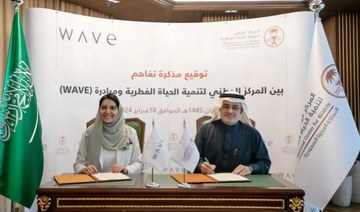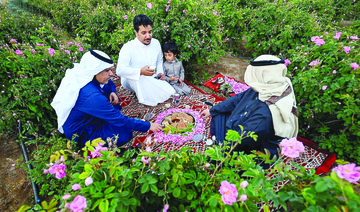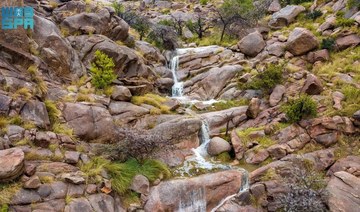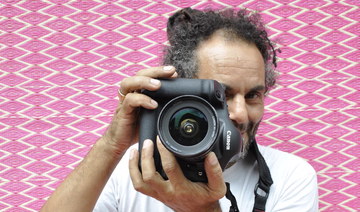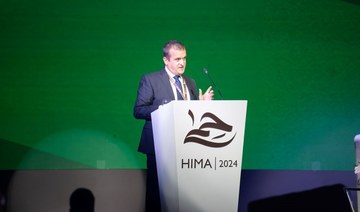With recovery still very slow for Egypt’s tourism industry — the coastal resorts among the hardest hit — most travelers coming to Egypt these days arrive in the capital, Cairo.
Usually this is for business or transit, which often means they have little more than a couple of days to explore one of the world’s most exciting cities. In a city with a population of over 20 million this can feel a tad overwhelming, so to make it easier to get the most out of Al-Madinah Al-Qahir — The City Victorious – here is a guide on how to spend 48 hours in Cairo.
DAY ONE
Cairo is home to one of the world’s most ancient Christian cultures and it is what makes this city like no other in the Arab world. A trip to Coptic Cairo isn’t just fascinating for the window into an ancient Christian culture it offers, but also because of just how much of the art and architecture of that culture mirrors classical Muslim ones.
Start at the seventh century Hanging Church, which is said to “hang” over the original water gate of Roman Babylon. Here, the art history lesson begins outside the courtyard; where to the left of the entrance is a beautiful ornamental balcony that seems to have been designed for a classical Moorish palace. Then there are the intricate stone carvings and geometric patterns on the heavy wooden door that could also have been borrowed from that palace.
Once inside, the courtyard’s mosaics of religious scenes also have a familiar echo. In one, a group of young men stand outside a church wearing white skull caps and thobe-like outfits holding crosses — replace the church with a mosque and the crosses with Qur’ans and it could be a scene outside a mosque from anywhere in the Muslim world.
The church itself is entered through a door carved with geometric star patterns that also seem classically Moorish. Inside, the ornate hanging lanterns, ivory-inlaid screens and floral-topped pillars are features seen in mosques all over Cairo. Admiring these wonderful commonalities will take a good few hours and should be followed by a visit to the equally fascinating Coptic museum next door.
In the late afternoon head downtown to Cafe Riche on Sharia Talaat Harb. This is one of Cairo’s oldest restaurants, and an excellent place to grab a late lunch or early dinner as you admire the greats of Egyptian culture. Once the favored drinking spot of the capital’s intelligentsia, the cultural tour at Cafe Riche starts outside its wooden, old-worldly facade. Here, behind glass frames, beautiful black and white photography offer a window into a Cairo from the same bygone eras Cafe Riche belongs to. After tucking into the delightful sambosa (meat-filled mini pastries) and fish fingers — made from fresh chunks of delicately spiced white fish — be sure to stick your head into the back room where huge black and white portraits of Egypt’s cultural who’s who hang beside intriguing cartoon caricatures.
In the afternoon, explore the quirky streets of downtown Cairo before heading to Dina’s Hostel on Sharia Abdel Khalek Sarwat for your bed for the night. Tucked away in a quiet, cool alleyway, Dina’s has entered modern Cairo history after becoming a hub for journalists during the 2011 revolution. The hostel continues to host weekly cultural lectures and exhibitions that are worth inquiring about. Rooms here are spacious, with beautiful oak flooring and solid wood furniture. Dina’s is on the fifth floor of a beautiful 250-year-old building with the most delightful little wooden elevator to take you there.
However, the best thing about Dina’s has to be the guests. Popular with eclectic, international and boho types, this is the only place in Cairo where you are likely to find yourself in conversation with an English researcher, a Japanese spiritual hippie and an American couch surfer all in one night.
DAY TWO
Get up bright and early to do the pyramids. That way you will avoid the intensity of the sun as it climbs to its midday zenith during your visit to the world’s only remaining ancient wonder — shade is scarce here. Arrive armed with plenty of water and a sun hat, before heading into one of the neighborhoods of Giza that directly border the pyramid complex. There, grab yourself a local guide with a camel and negotiate a decent price — not only will you avoid the queues but you also get to see the site much quicker than you will by foot, leaving you more time to explore the rest of Cairo. Of course, the main reason you should experience the pyramids atop your very own “ship of the desert” is because it is the way man has done so since the enigmatic monuments were first built — gently swaying atop a dromedary as the Sphinx comes into view is exactly how Antipater of Sidon and Philo of Byzantium would have first set eyes upon this magical Pharaonic graveyard, before instantly putting it on their list of the Seven Wonders of the World. No trip to Cairo can possibly be complete without seeing the pyramids of Giza.
After a well-earned rest, make the afternoon and evening all about Cairo’s 14th century medieval bazaar, the Khan Al-Khalili. Once the location of the tomb of the Fatimids — Cairo’s founders — the Khan has been a caravanserai for the past seven centuries. Like most traditional great markets, it used to be divided into distinct specialist districts. But these days only the spice dealers, coppersmiths and gold sellers have their own areas. Among the landmarks to visit is Midaq Alley, where Cairene Nobel Laureate, Naguib Mahfouz, set one of his best-known works. The alley is so famous now that to see its street sign you’ll have to pay a little baksheesh at the nearby coffeehouse. The other reason to come to the Khan is the historic ahwa, El-Fishawi’s, where you can enjoy a coffee and bubbling sheesha the way Cairenes have been doing since 1773.
Squeezed into a narrow alley off Midan Al-Hussein, sit back and enjoy the bazaar as it continues to come at you with hawkers seemingly appearing from nowhere to offer you everything from fake Ray-Ban sunglasses to an oud serenade. Fishawi’s also serves the most delicious version of sahlab, a traditional Egyptian winter drink made from creamy milk and topped with peanuts and a hint of coconut.
• [email protected]
48 hours in Cairo: To experience the Egyptian city’s old-world vibe or simply to see the pyramids requires just two days
48 hours in Cairo: To experience the Egyptian city’s old-world vibe or simply to see the pyramids requires just two days
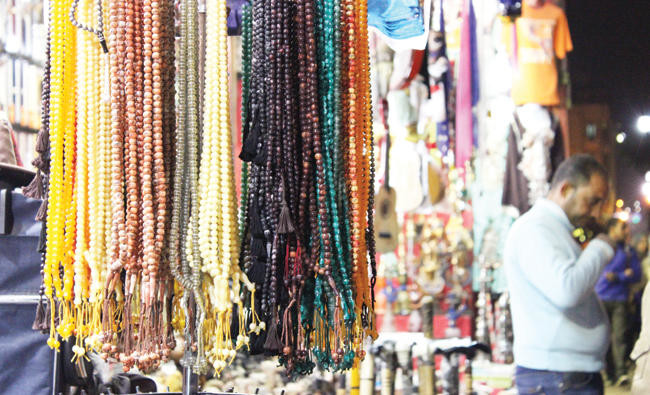
Wildlife center to explore caves in Saudi Arabia’s north

- The program to explore biodiversity in caves was launched “due to its environmental significance and positive impact on wildlife”
RIYADH: Teams from Saudi Arabia’s National Center for Wildlife will begin examining various caves in the Northern Borders region as part of the Caves Exploration Program, which began in 2022.
It comes as part of a larger program that monitors ecosystems and biodiversity throughout the Kingdom.
These sites will be added to an international map of biodiversity and natural heritage hotspots as historical ecosystems and natural biological museums.

Dr. Mohammed Ali Qurban, CEO of the center, explained that the discoveries in the caves hold significant historical environmental value for Saudi Arabia.
“The cave ecosystems serve as a historical museum, providing evidence of the biological diversity that has existed in the Kingdom throughout various historical eras, as well as the spatial, environmental, and climatic changes in the Arabian Peninsula,” he explained.
The cave ecosystems serve as a historical museum, providing evidence of the biological diversity that has existed in the Kingdom throughout various historical eras.
Dr. Mohammed Ali Qurban, National Center for Wildlife CEO
Qurban added that these unique ecosystems provide a suitable environment for a wide range of organisms, as evidenced by the discovery of numerous skeletons of different types of mammals.
The program to explore biodiversity in caves was launched “due to its environmental significance and positive impact on wildlife.”
The center is currently completing studies on the targeted cave sites and documenting their importance within an integrated program.
According to Qurban, the center’s earlier discovery of several Arabian cheetah mummies in a cave in the northern part of the Kingdom — with some skeletons estimated to be over 4,000 years old — provided the first evidence of the species’ presence in the Kingdom.
Consequently, the center plans to develop a program for the resettlement of the Arabian cheetah in the Kingdom, enabling it to play a crucial role in maintaining environmental balance.
Qurban noted that, among other significant discoveries, researchers from the center discovered rare bats and the remains of several extinct animals.
The center is currently working on classifying these finds and determining their ages. This effort will facilitate the resettlement of these extinct species or their closest genetic relatives, thereby restoring their role.
The cave ecosystem is one of the rarest and most important of its kind in the world, recognized as natural heritage by UNESCO.
There are 1,826 caves in the Kingdom, consisting of underground passages and tunnels formed by natural processes in dry limestone areas — evidence of a historical era that experienced prolonged rainy climatic conditions.
Baha’s quaint guesthouses offer a warm welcome

- Sharifa Al-Ghamdi, owner of Al-Ayed Heritage Guesthouse, revealed that she has worked hard over the years to acquire as many historic houses as possible to be able to give tourists an authentic taste of what life was like in the past
RIYADH: Al-Baha is a region of the Kingdom blessed with a rich legacy of ancient architecture, with heritage lodges playing a big role in luring tourism to the city.
According to the Saudi Press Agency, heritage lodges or guesthouses in the region play an important role in attracting more investment. They provide local and international visitors with a look into the past, a taste of a simpler time that many people long for.

The guesthouses are a reflection of the region’s heritage. Al-Baha’s residential buildings, castles and fortresses were designed to suit not just environmental variables such as topography and climate, but also social circumstances such as local customs and ancient traditions.
FASTFACTS
• Heritage lodges or guesthouses in the Baha region play an important role in attracting more investment.
• One of the most enticing elements of these heritage guesthouses is their deep connection with nature.
One of the most enticing elements of these heritage guesthouses is their deep connection with nature.

They are constructed using stones and trees from the region, typically granite and basalt boulders adorned with quartz, and roofed with mud-coated juniper trees.
Sharifa Al-Ghamdi, owner of Al-Ayed Heritage Guesthouse, revealed that she has worked hard over the years to acquire as many historic houses as possible to be able to give tourists an authentic taste of what life was like in the past.

She said that, with the assistance of her family, she was able to realize her lifelong dream and passion and invest her post-retirement time in establishing heritage tourist guesthouses.
She has transformed the old houses in her village from dilapidated structures into a tourist and environmental attraction for people in search of tranquility and relaxation.
All is rosy in Taif as fans flock to flower festival
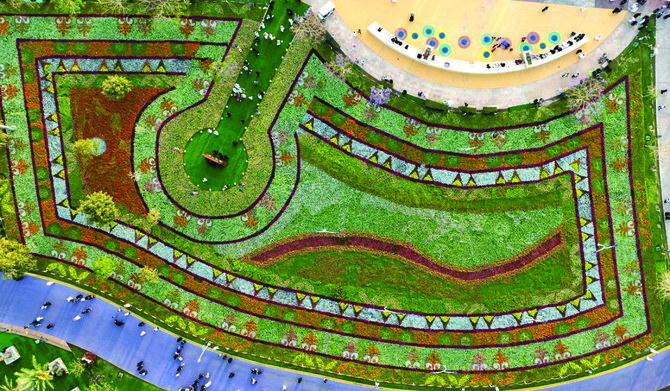
- Taif’s annual show features a floral carpet of over million flowers
- Farmers, vendors optimistic about increase in sales at the event
JEDDAH: Visitors are flocking to the 19th Taif Rose Festival at Al-Raddaf Park where the flowers are in full bloom, highlighting the region’s rich floral heritage.
The festival, themed “Qetaf” meaning “picking time,” coincides with the harvest season and will run until May 12. The organizers include the Taif Rose Cooperative Society and Taif Municipality.

There has been an impressive turnout of Taif residents and domestic and international tourists. The exhibitors — mostly farmers and vendors — are optimistic that increased revenues will help boost rose cultivation and production.
Abdullah Altwairqi, a local farmer and festival participant, said: “Participating in the Taif Rose Festival has become a tradition for me. The atmosphere improves each year, and the revenue and exposure we receive from visitors make it worthwhile.”
HIGHLIGHTS
• Exhibitors at the Taif Rose Festival are optimistic that increased revenues will help boost rose cultivation and production.
• The flower carpet set up by the municipality in the center of the park was designed with decorative patterns inspired by the province’s heritage.
• It covers 5,206 square meters and was crafted using over a million flower and rose seedlings, making it the largest in the history of the festival.
At his booth, Altwairqi showcased various flowers and fruit, including Taif roses, peaches, prickly pears, figs, mulberries, grapes, blackberries, pomegranates, as well as aromatic plants.

Altwairqi urged people to visit the Rose Flavor cafe where they can savor hot and cold beverages infused with the flavor of Taif roses and other aromatic flowers including lavender, which is also abundant in the region.
The flower carpet set up by the municipality in the center of the park left visitors awestruck. Covering 5,206 square meters, it was crafted using over a million flower and rose seedlings, making it the largest in the history of the festival.

Faiz Al-Thibaiti, director-general of media and corporate communication at Taif Municipality, told Arab News: “The flower carpet was designed with decorative patterns inspired by the province’s heritage.”
He said the carpet has ensured the event has become “one of the most important tourism festivals in the Kingdom, attracting thousands of visitors and tourists from various regions of the country.”
NUMBER
70k
The rose-picking season in Taif starts around the end of March or early April, lasting between 35 to 45 days, with an average of 70,000 roses picked daily.
The decorations adorning the flower carpet draw inspiration from the intricate designs found on the walls and facades of Taif’s ancient structures, including Al-Kaki Palace in Al-Salama and King Saud Palace.

Al-Thibaiti added: “Preparations for the festival started early, with the Taif Rose Cooperative Society detailing participation criteria to highlight Taif roses, including their cultivation, harvesting, and distillation into fine perfumes. This adds to Taif’s unique tourist appeal. The festival provides a platform for producers, experts, and entrepreneurs to connect, collaborate, and boost this important sector.”
Among the highlights are the rose and flower path, product stalls, goods market, government booths, and the agricultural nursery.
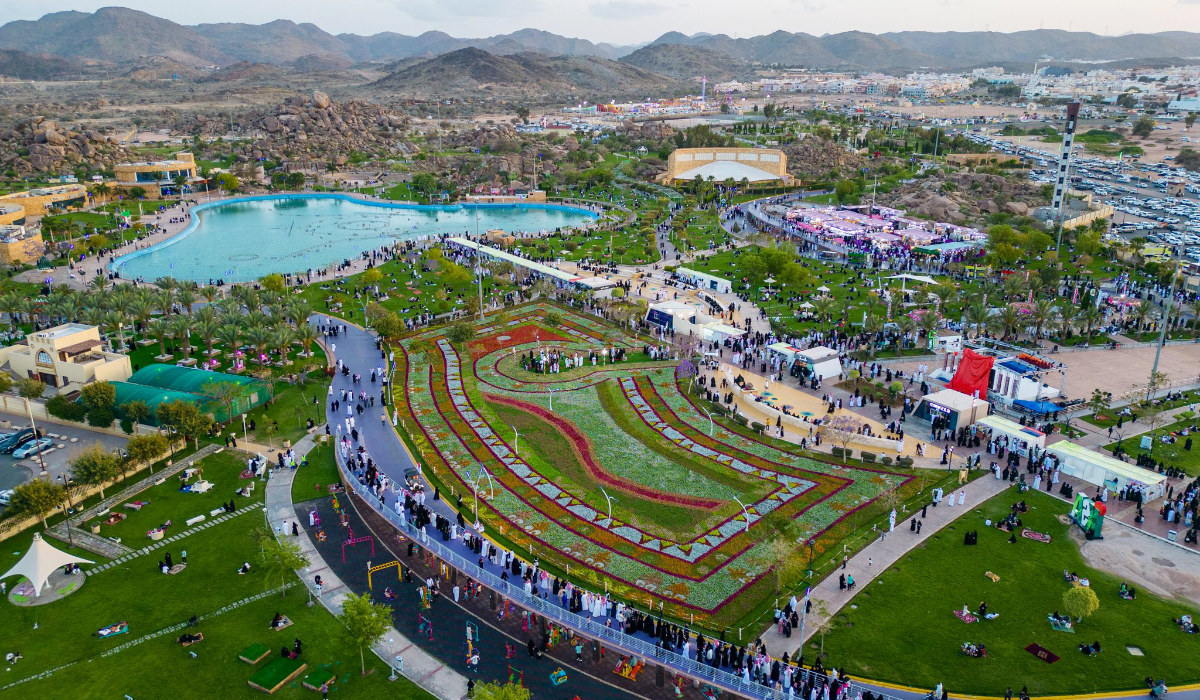
Interactive fountain shows accompanied by national tunes were also among the attractions, with a crossing to the upper pedestrian bridge from where visitors can view the massive flower carpet.
Artwork, flower arrangements, and hanging floral baskets scattered throughout the park added to the flair of the event.
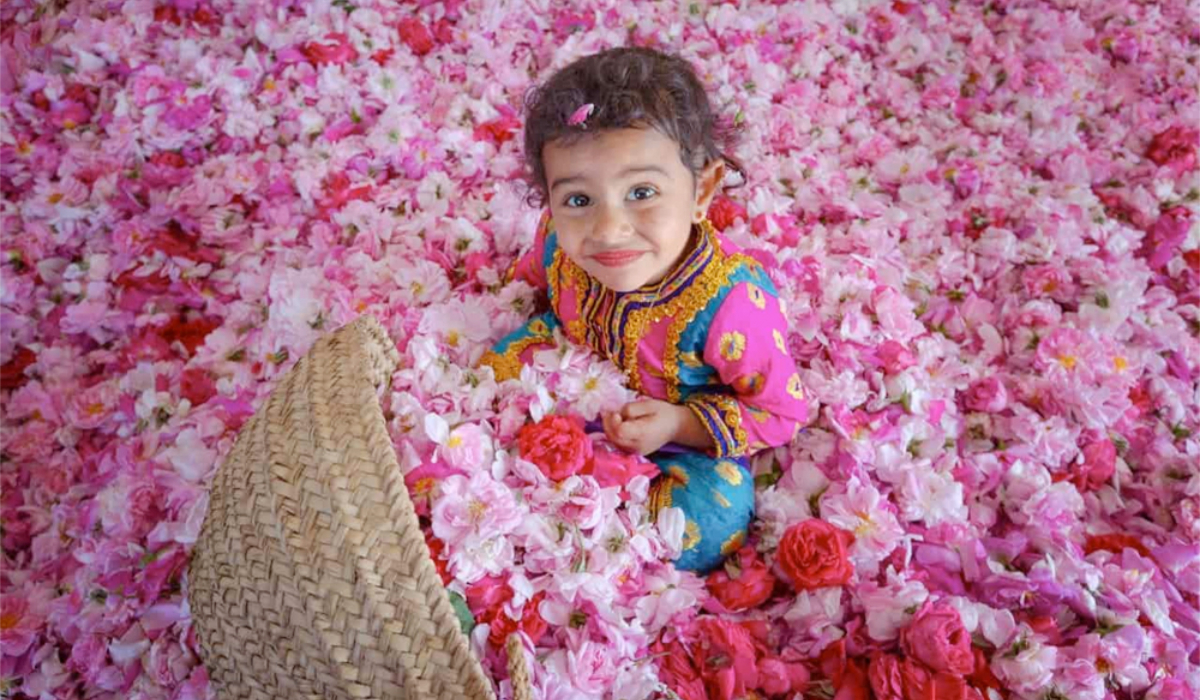
Al-Thibaiti said: “The significant turnout at the current festival comes amid increasing rose production year after year, indicating the success of this agricultural sector in achieving high revenues while continuing to promote the Taif rose product.”
Taifrosethon
The five-day Taifrosethon began on May 7, which is being held to encourage entrepreneurship in the region with technological solutions to enrich the industry.
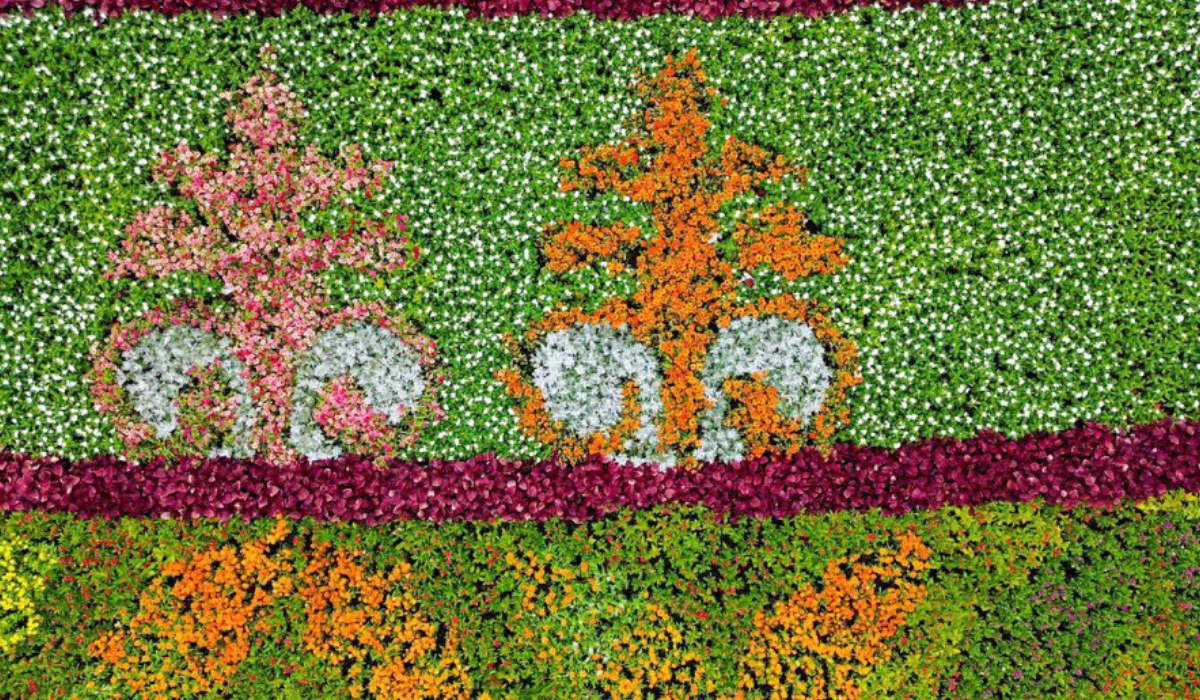
The event includes various skills training and technical workshops covering trade, cultural heritage, and tourism.
The top-three winners will receive $2,666, $1,866 and $1,333 respectively. Participants are required to enter as teams, each with three to five members.
Taif’s roses
The Taif province produces more than 200 million roses each season. According to the local chamber of industry, each tree produces an average of 250 roses daily throughout the harvest season, which lasts for about 45 days.
The rose-picking season starts around the end of March or early April, lasting between 35 to 45 days, with an average of 70,000 roses picked daily.
Taif roses feature an exquisite, sweet fragrance and vibrant pink hues on delicate petals, and are a hallmark of the region’s natural beauty.
Cultivated in the high-altitude climate of Taif, these roses thrive in the cool temperatures and fertile soil of the region.
They are meticulously harvested by hand to preserve their quality, with the petals carefully collected for various purposes.
AlUla Academy aims to be hub for tourism vocational training in Saudi Arabia and beyond
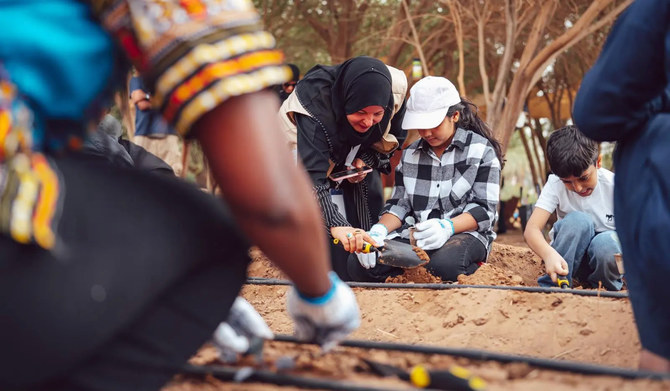
- Hotel.School chosen as global partner for hospitality training and the academy will welcome its first group of students in early July
ALULA: The Royal Commission for AlUla on Tuesday officially launched AlUla Academy, described as a pioneering initiative that aims to be a beacon across the region for excellence in vocational training in the tourism sector.
It will serve as a global hub, officials said, for workers directly involved in crafting memorable experiences for diverse groups of visitors to AlUla from around the globe.
Hotel.School has been chosen as the academy’s global partner for hospitality training, and the collaboration will begin with an inaugural digital training program for the first group of students in early July. Subsequent programs will be available through the academy’s website.

Authorities in the Kingdom are carefully developing historic AlUla, an ancient oasis in the northwest of the Arabian Peninsula, as a global tourist destination distinguished by its 7,000-year-plus history, spanning several civilizations.
It encompasses four primary heritage sites and a wide selection of visitor experiences which, the Royal Commission said, offer tourists the chance to immerse themselves in the region’s rich heritage and culture, take advantage of its wellness offerings, bask in the beauty of nature, indulge in the arts, and embark on and voyage of discovery.

The establishment of the academy therefore stands as a pioneering endeavor within the field of tourism, it added, and a cornerstone of efforts to achieve the goals of the Kingdom’s Vision 2030 development and diversification plan, one of the aims of which is to create 1.3 million jobs for Saudi citizens.
Philip Jones, the Royal Commission for AlUla’s chief tourism officer, said: “Learning centers such as AlUla Academy play a pivotal role in creating job opportunities while upholding excellence in visitor experiences to international standards, all while maintaining an authentic Saudi essence.

“Both physically and digitally, AlUla Academy will expedite the training process, enhancing the quality and efficiency of professional skill development, thereby advancing the tourism sector’s goals in the Kingdom.”
The guests at the launch ceremony on Tuesday included Anita Mendiratta, special advisor to the UN secretary-general at the UN World Tourism Organization. Also a member of the Royal Commission’s advisory board between 2017 and 2023, and one of the key figures behind the development of the academy, she emphasized the organization’s steadfast commitment and dedication to the enhancement of visitor experiences through the development of local skills.
“The key to AlUla’s development lies in embracing authenticity and prioritizing community engagement,” Mendiratta said.
“The Royal Commission for AlUla understands that reaching tangible milestones necessitates investing in skill development, providing services with international standards, yet infusing them with the distinct essence of AlUla that echoes its environment, the culture of its people, and their profound history.”
Hotel.School was carefully chosen as a global partner for AlUla Academy, the commission said, following a rigorous selection process to identify the most suitable collaborator to bolster its endeavors and help achieve its objectives. To that end, it will offer intelligent educational solutions and collaborate with developers of cutting-edge technologies to provide a diverse array of online-learning experiences, officials said. Further information about courses, registration procedures and criteria for the selection of students will be available soon.
Adnan Sawadi, the acting director of Hotel.School, said the institution is committed to supporting the commission in its mission to achieve excellence in vocational training across AlUla, the Kingdom and the wider region.
“At Hotel.School, we recognize that the vitality of the hospitality sector is its people, and we take pride in our pivotal role in nurturing and developing the skills essential to fortifying AlUla’s position as a global tourism and hospitality hub,” he said.
“Our commitment extends to fostering an educational environment that resonates with the region’s rich heritage, amplifying its cultural significance on the global stage.”
AlUla has received significant acclaim and been described as a beacon of success in the field of tourism development and the enhancement of local skills, the commission said. It attracted 263,000 visitors in 2023 alone and consistently surpasses the targets set for it, officials said, increasingly bringing it to the attention of leading event organizers, investors, development partners, airlines and the international media.
Ryan Reynolds named Abu Dhabi’s Yas Island ambassador

DUBAI: Unmasked as the mystery skydiving celebrity who appeared in a recent teaser campaign for the Abu Dhabi location, Hollywood star Ryan Reynolds is Yas Island’s newest “Chief Island Officer.”
The “Deadpool” actor takes up the role after US actor Jason Momoa, who in turn took over from US comedian Kevin Hart.
In the new promotional video, Reynolds is seen parachuting straight into the heart of the action amidst speeding cars on Yas Marina Circuit, missing his intended landing spot at the W Abu Dhabi.
“I've been an actor, a producer, a Welsh football club owner and I could go on. So I will …" begins Reynolds, but the rest of his speech is drowned out by the roar of F1 cars as they zoom around the circuit.
The trailer also features the actor enjoying the sights and sounds of Yas Island, as he zooms down water slides at Yas Waterworld Abu Dhabi, explores Gotham City and takes rollercoaster rides at Warner Bros. World.
"With the appointment of Ryan Reynolds as our latest chief island officer of Yas Island Abu Dhabi, we continue the tradition of excellence established by Kevin Hart and Jason Momoa. Reynolds brings his own unique blend of charisma, energy, and enthusiasm to the role, promising to elevate the Yas Island experience to even greater heights. We're thrilled to embark on this exhilarating journey with him, inviting fans worldwide to be part of the legacy," said Liam Findlay, chief executive of Miral Destinations.





